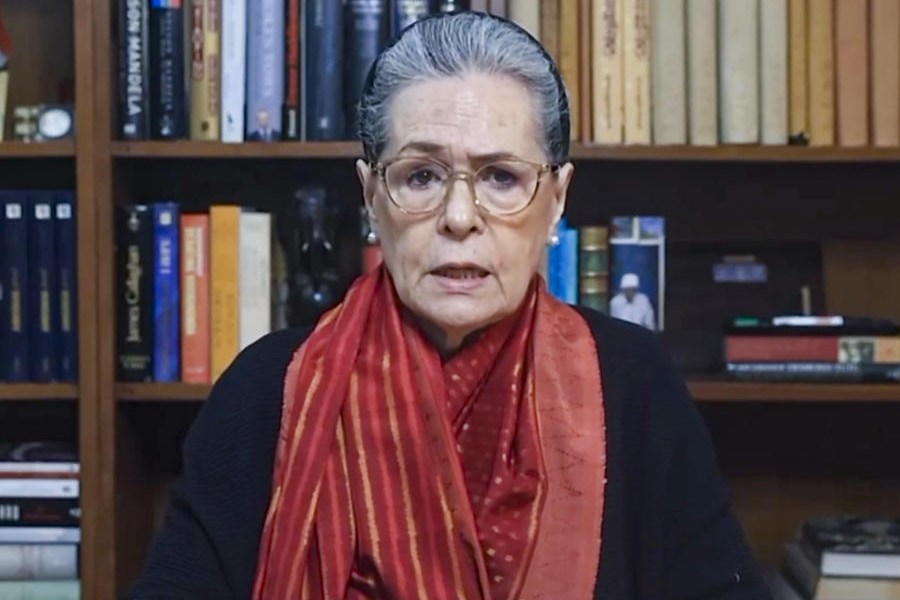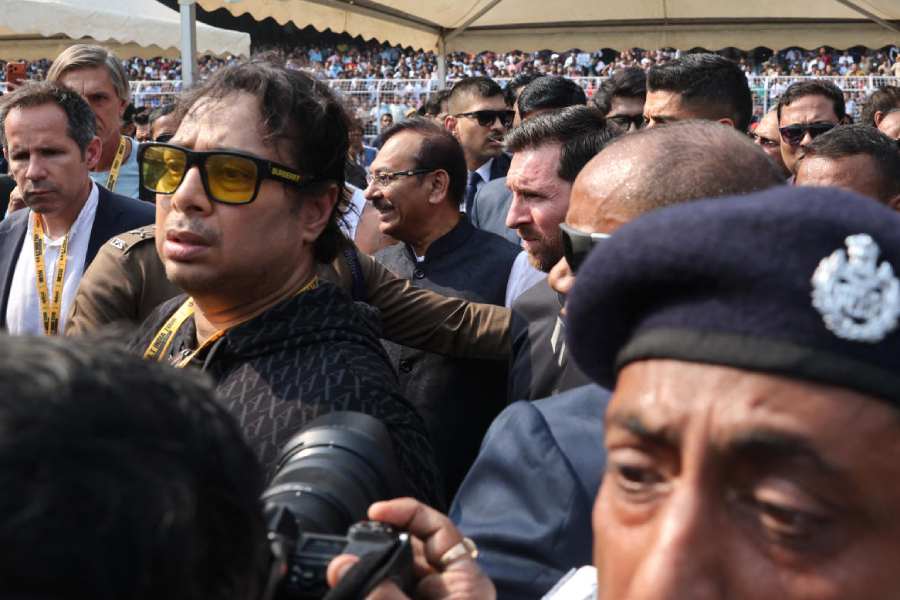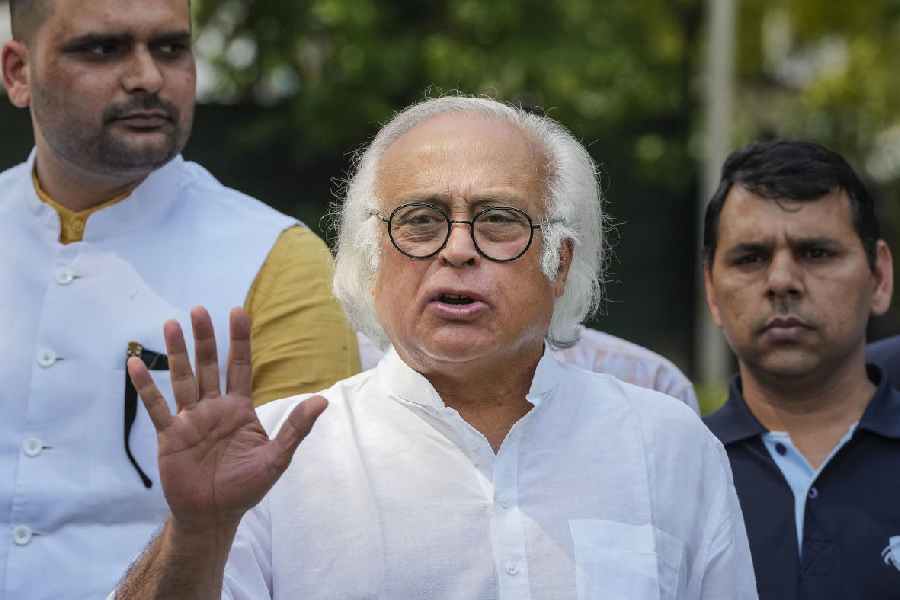|
|
I had more or less stopped buying cricket books, in part because I do not have shelf-space, and in part because the best writing on the game is not now between hard covers but in cyberspace. Last month, walking through the World Book Fair in New Delhi, I found a cricket book that I was tempted to buy. One reason was that there weren’t many other books that attracted my attention (this was the 10th or 11th world book fair I have attended in the Pragati Maidan — and far and away the most disappointing). A second reason was that the author is the most highly respected man in cricket.
And so I bought Richie Benaud’s My Spin on Cricket, and brought it home. When I opened it that night the first thing I read was this dedication:
“Sometimes dedicating a book can run to pages, almost a small book in itself. This is simply to say thanks to all those who, for me, in the short space of 75 years, have made cricket a game of such character, full of so many characters. I’ve raised a glass to [the English cricketers and Test captains] Colin Cowdrey, Ted Dexter and others who have provided a reminder that it should be no hardship to embrace the Spirit of Cricket as well as the winning of the game. Subtly, they have posed the question of whether it really is impossible to win a cricket match without what, in these modern times, is known as sledging.”
The book was published in 2005, so the dedication was perhaps written a year previously. By the time I came to read these words, in February 2008, they had a resonance that Richie Benaud could not really have anticipated. For it was in the Australia-India Test series of 2007-08 that the question of sledging dominated the cricketing headlines as never before (and hopefully, never since).
Benaud’s own early heroes were the opening batsman, Arthur Morris, the fast bowler, Ray Lindwall, and the all-rounder, Keith Miller. These three men formed part of arguably the strongest team in cricketing history — Don Bradman’s Test team of 1946-48. The caveat ‘arguably’ is required because in recent years another Australian side, that led by Steve Waugh and more recently by Ricky Ponting, has emerged as a strong challenger for that title. Bradman’s side had perhaps the more solid batting line-up (in part because of the Don himself), the contemporary Australians marginally the better bowling (at least when McGrath and Warne were both playing). Both sides were quite brilliant in the field, both sides had world-class wicket-keepers (although inferior to Tallon behind the stumps, Gilchrist has greatly outshone him with the bat).
Comparing these two sides, one would say, to use a Hindi phrase, that unnis bis ka farak hai. This is like the difference between nineteen and twenty, too close to call. Cricketing-wise the two teams were more-or-less on the same plane. But character-wise there is simply no comparison. Ponting’s men are a bunch of louts. Bradman’s men were gentlemen. None more so than Benaud’s three heroes in particular. Morris, Miller and Lindwall never sledged an opponent, never questioned an umpire’s decorum, never celebrated a victory to excess (nor mourned a defeat to excess, either). In other words, their behaviour, on the field and off it, was as immaculate as that of the great modern trinity of Indian cricket: Rahul Dravid, Anil Kumble, and Sachin Tendulkar.
However, while the Indian cricketers may be better behaved, the Australians are better cricketers. The question is — can they win as easily if the rules and norms of cricket do not allow them to sledge? Over the past 10 years, the guardians of the game have been notoriously indulgent towards the Australians. Everyone knows that they are the worst-behaved side in world cricket, yet their transgressions have rarely been noted and still more rarely acted upon. Where umpires and match referees had failed, it took a fellow cricketer to act. For it was Anil Kumble’s statement, made after the Sydney Test, that “only one side was playing in the spirit of the game”, that finally shamed the Australians into accepting that in this particular match, and in hundreds of matches before it, they had displayed a boorishness that brought little credit to themselves, their game, and their country.
But one must not get too jingoistic here. For there are aspects of the game in which the Indians could learn from the Australians, rather than the other way around. I have in mind the game’s administration, which in India is in the hands of greedy men looking at filling their pockets in the short term, but in Australia is taken care of by visionary professionals concerned with the sustained success of their team. The boosters in the press have gone ballistic about India’s recent victory in the CB series in Australia. They seem to have forgotten that while Australia have won the last three World Cups, this is the first one-day tournament won by India in six whole years. Why, just a few months previously, Australia thrashed us in a one-day series in India. Even in this tournament they had much the better of the early games.
The truth is that in both Test and one-day cricket, India has a mediocre record, while Australia has consistently been the best team in the world. This difference is in part due to innate talent, and in part due to the way Cricket Australia is run. There are fine, focused academies to spot and nurture young talent; fair-minded selectors who are not subject to the pulls and pressures of nepotism or provincial biases; money managers whose dealings are transparent and, in both senses of the word, accountable.
The Indian Premier League is but the latest example of the malfunctioning of the Board of Control for Cricket in India. Where else, but in India, would two senior officials of a sports body be able to float their own teams? Besides, we have far too much tamasha cricket already. Rather than make our top players take more trips on this merry-go-round, our board would have been better advised to make sure that they spend time playing the knock-out rounds of the Ranji Trophy. The Australians have demonstrated that the best, perhaps the only, way to keep talent flowing through the system is to cut down on one-day internationals, and ensure that the established players are matched against up-and-coming youngsters in the keenly fought Pura Cup (formerly the Sheffied Shield).
India plays far too much cricket already. One consequence of a schedule that is so full is that our younger players (and the fast bowlers in particular) break down at regular intervals. Not long ago, Sreesanth was out due to injury; he was back, playing in Australia, while Zaheer Khan and R.P. Singh had returned home with injuries. The oohs and aahs that now meet every ball bowled by Ishant Sharma will turn to moans and groans when he breaks down, as he surely will, and probably quite soon.
A great sporting nation such as Australia deserves better-behaved cricketers. (One thing of which we can be certain is that when Anil Kumble finally retires and writes his memoirs, he will not dedicate it to Ricky Ponting and Steve Waugh.) An obsessive cricket nation such as India deserves a better-run cricket board. I think there is a great deal of mutual learning to be had here. Thus far the Indian press has focused only on one side of the equation. But the indications are that this particular battle may have been won — that, shamed by the criticism of their opponents and, following that, of their own countrymen, Ponting and company are acting somewhat more decently when on the field. It is time now that we started thinking seriously about what our cricket administrators can learn from theirs.












